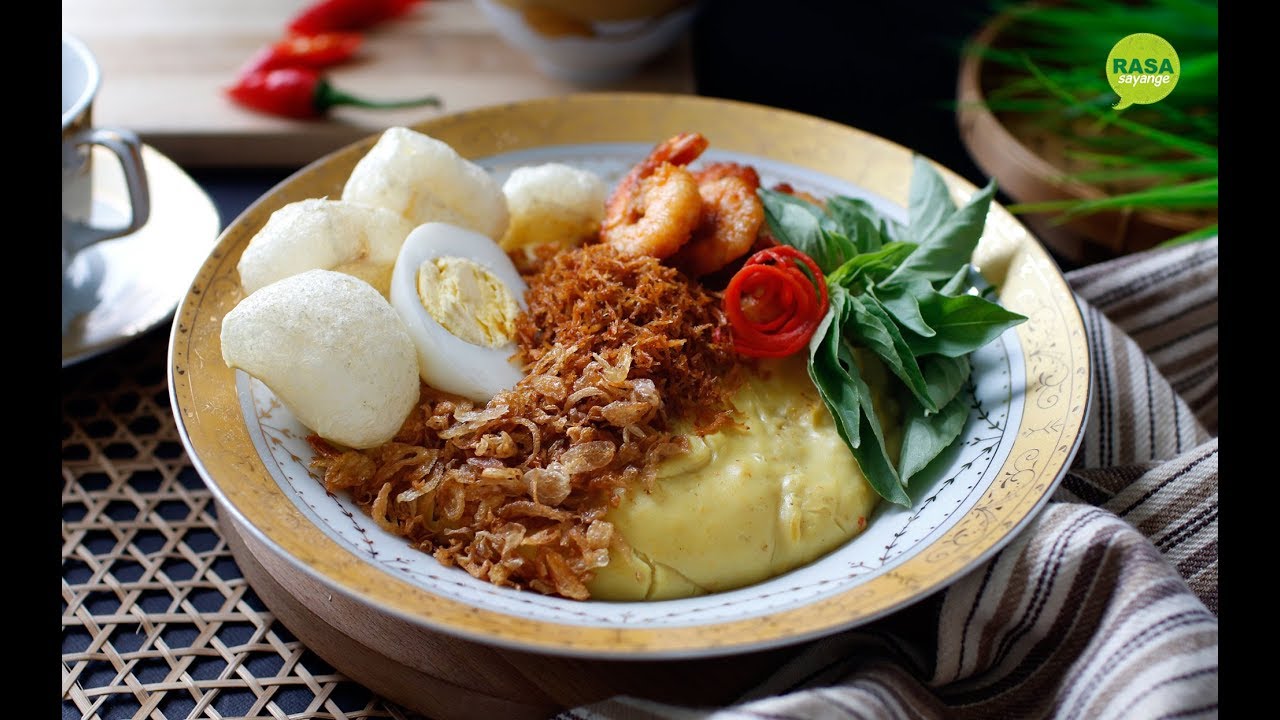Resep dan Cara Membuat Bubur Manggul Khas Madura.
Jenang manggul bubur tradisional asal Madura, Jawa Timur ini bolehlah dicoba. Adonan mirip bubur sumsum yang lembut ini makin enak dipadu dengan topping gurih di atasnya.
Serundeng kelapa dan sambal goreng udang jadi topping wajib hidangan ini.
Tidak seperti serundeng yang bercitarasa gurih manis, serundeng dalam sajian ini justru gurih dengan sensasi pedas yang berasal dari sambal goreng. Makin segar diberi tambahan lalapan kemangi.
Bubur manggul asal Madura, JATIM ini memiliki penampilan yang sederhana namun lezat di mulut. Dinamakan dengan 'Manggul' konon katanya para penjual bubur dahulu menggunakan gerobak yang dipanggul.
Berbeda dengan bubur nasi yang dibuat dari beras, bubur manggul terbuat dari tepung beras.
Cara buatnya gampang, tepung beras yang dicampurkan dengan santan, daun salam dan garam dimasak hingga agak kental. Beberapa orang juga sering menambahkan bumbu dan rempah-rempah bawang merah, bawang putih, cabai merah, kunyit, lengkuas, kencur, ketumbar, kemiri dan daun jeruk.
Tips untuk menghindari penggumpalan, Anda disarankan untuk melarutkan tepung dengan sedikit santan hangat sambil diaduk rata. Dan masak campuran tepung dan santan dengan sisa santan dalam panci aduk hingga matang dan mengental.
 |
| Resep dan Cara Membuat Bubur Manggul Khas Madura |
Di Madura, bubur ini sering dinikmati saat sarapan pagi dan banyak ditemukan di sekitar pasar tradisional ataupun warung-warung yang buka pagi hari. Berikut kumpulan rahasia aneka kreasi dan variasi olahan resepi bubur manggul ala Madura sajian sedap istimewa lengkap dengan cara bikin sendiri di rumah ala rumahan (Homemade) step by step anti gagal yang simple, mudah dan praktis untuk konsumsi sendiri maupun untuk jualan ide usaha bisnis kedai bubur, warung bubur, rumah makan, maupun restoran ala cafe restu untuk sarapan pagi.
Resep dan Cara Membuat Bubur Manggul Khas Madura
BAHAN BUBUR :
- 250 gram beras
- 2 liter air
- 2 lembar daun salam
- 1 sdm garam
- 3 sdm bawang goreng
- 5 tangkai kemangi, petik daunnya
- 500 gram udang segar ukuran sedang, kupas
- 15 butir telur puyuh, rebus, kupas
- 5 sdm kelapa parut, sangrai, haluskan
- 4 buah cabai merah besar, buang bijinya, iris tipis
- 750 ml santan dari 1/2 butir kelapa
- 3 sdm minyak untuk menumis
- 6 butir bawang merah
- 5 siung bawang putih
- 4 buah cabai merah keriting
- 1/2 sdt terasi bakar
- 3 cm lengkuas muda
- 1 sdt ketumbar, sangrai
- 1 sdm garam
- 1/2 kaldu bubuk
- Cara Membuat Bubur Manggul : Masak beras bersama air, daun salam dan garam hingga menjadi bubur. Angkat. Sisihkan.
- Cara Membuat Kuah : tumis bumbu yang dihaluskan hingga matang. Masukkan udang, aduk hingga berubah warna. Masukkan telur puyuh rebus, kelapa sangrai dan cabai. Aduk rata, tuangkan santan, masak sampai santan agak berminyak. Angkat sisihkan.
- Tuangkan bubur secukupnya kedalam mangkuk. Siram dengan kuah udang, lalu taburi dengan bawang goreng dan daun kemangi.
- Sajikan dalam keadaan hangat lengkap dengan kerupuk.